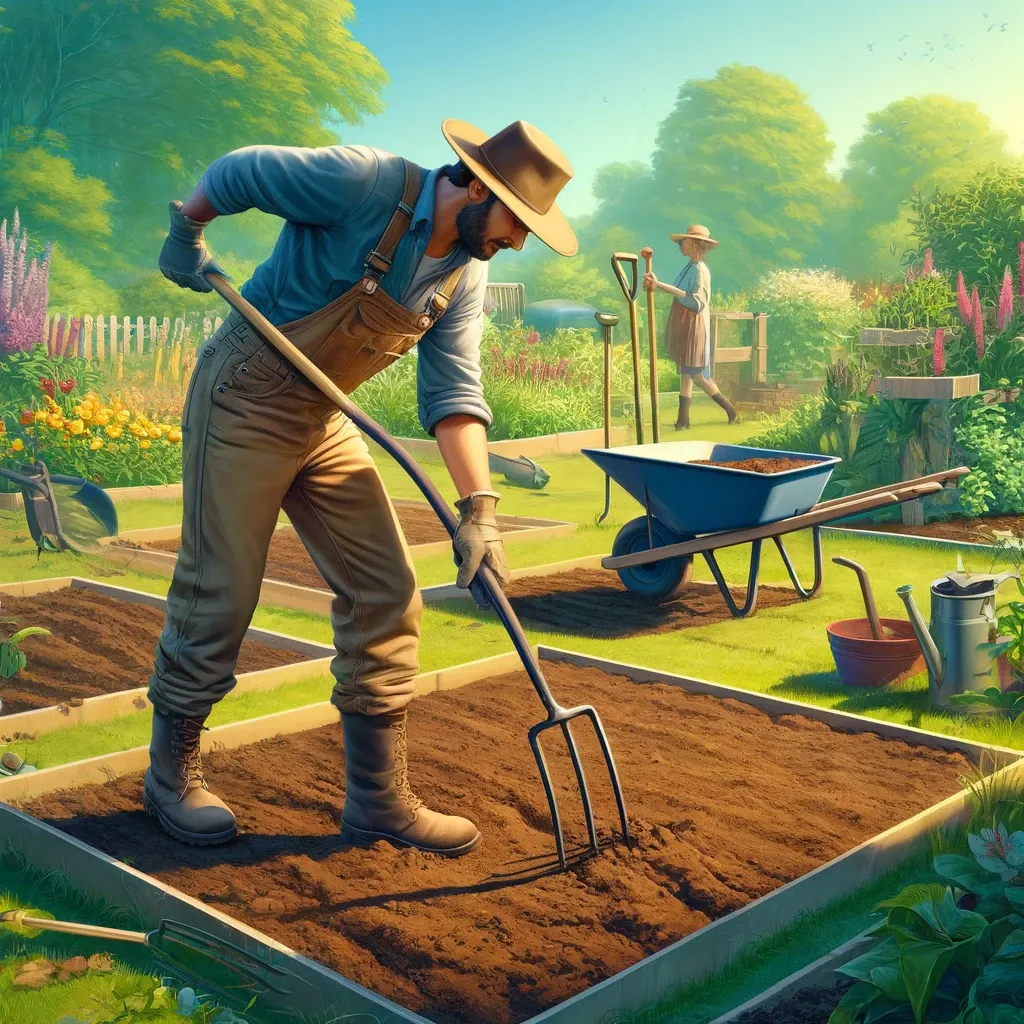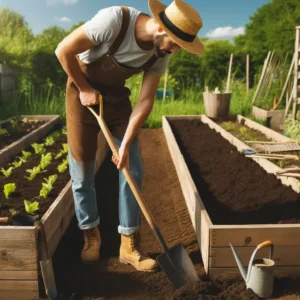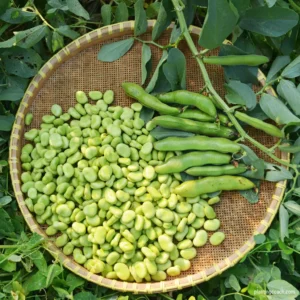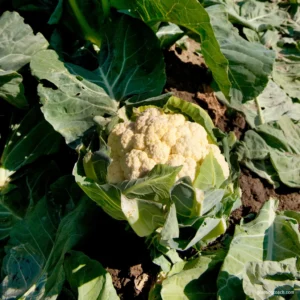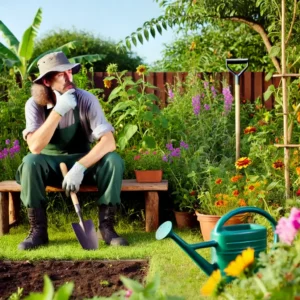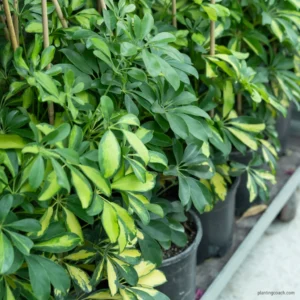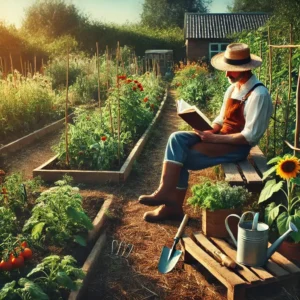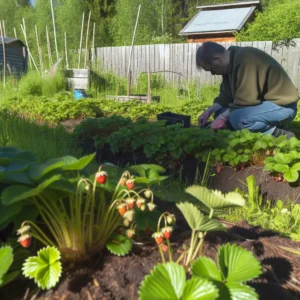Arranging a vegetable garden efficiently is more than just a matter of aesthetics; it’s essential for maximizing the yield and health of your plants. A practical garden layout considers several crucial factors, including optimal sunlight exposure, soil quality, and ease of access for maintenance and harvesting.
This article will explore practical steps and strategies for Arrange a Vegetable Garden, helping to transform a simple plot of land into a productive and sustainable space. Whether you are working with an expanding backyard or a modest balcony garden, the principles of effective garden design can greatly influence your gardening success.
Understanding the Basics of Arrange a Vegetable Garden
Garden planning begins with understanding the basic needs of the plants you wish to grow. Every vegetable has its own requirements for sunlight, water, and soil nutrition, which should guide the zoning of your garden. For instance, vegetables like tomatoes and peppers grow strongly in full sun, while leafy greens such as spinach and kale can tolerate more shade. Creating zones based on these needs helps in optimizing plant health and yield.

Access paths are another fundamental aspect of garden layout. They allow for easy movement within the garden for tasks such as planting, weeding, and harvesting. Paths should be wide enough to walk through comfortably and, if necessary, to accommodate a wheelbarrow or other gardening tools. Moreover, positioning paths strategically can help prevent soil compaction around plants, promoting healthier root growth and water absorption.
Choosing the Right Location
Selecting the right location is paramount in garden planning. Ideally, a vegetable garden should receive at least six hours of direct sunlight daily. Observe your yard throughout the day to identify areas that meet this criterion. Consider wind patterns as well; strong winds can stunt plant growth, dry out soil, and knock over taller crops. If your garden is exposed, planting a windbreak or using hedges can provide necessary shelter.
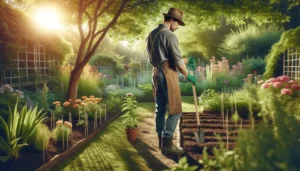
Soil quality also plays a crucial role. Most vegetables flourish in rich, well-draining soil. Conducting a soil test can reveal pH levels and nutrient deficiencies, which can be amended accordingly with organic materials like compost or lime. Ensuring your garden is placed in an area with good native soil or amending the soil adequately before planting will provide a strong foundation for your plants.
Designing Your Garden Layout
Choosing a garden design is largely influenced by the space available and your gardening goals. Traditional row gardening is common and allows for easy cultivation and harvesting, but it might not be the most space-efficient. Raised beds offer better drainage and can help back-strain by reducing the need to bend over. They also clearly distinguish the garden area and can be filled with a custom soil mix.

Square foot gardening, on the other hand, is a method that divides the garden into small square sections (typically 1×1 foot), each dedicated to a specific number of plants, depending on their size. This method can greatly increase yield per square foot and is ideal for gardeners with limited space. Container gardening is another viable option for those with no ground space, such as apartment dwellers with balconies.
Companion Planting Benefits
Companion planting is a practice that involves growing different plants together to benefit each other. For example, tall sunflowers can provide shade for more shade-tolerant crops on hot days, while marigolds can deter pests from nearby vegetables. Basil planted next to tomatoes is said to improve their flavor, and beans can fix nitrogen in the soil, benefiting leafy vegetables like spinach and lettuce.

Strategic companion planting can enhance garden productivity by maximizing space, reducing pest issues, and increasing pollination rates, all of which contribute to a more bountiful harvest. It also promotes biodiversity, which is important for a healthy garden ecosystem.
Crop Rotation for Soil Health
Crop rotation is a crucial practice for maintaining soil health and sustainability in the garden. By rotating crops—especially in distinct families—from one area to another annually, you can help prevent the buildup of pests and diseases in the soil. For example, following tomatoes with a root crop like carrots can help break the life cycle of tomato-specific pests and diseases.

Rotation also helps manage soil fertility. Different plants have varying nutrient needs; legumes, for instance, add nitrogen to the soil, which can benefit leafy vegetables planted in the same spot the following year. Planning your crop rotation in advance can keep your soil healthy and productive over the long term.
Vertical Gardening to Save Space
Vertical gardening is an exceptional approach to maximizing space in small areas. By growing plants upwards, gardeners can increase their yield per square foot and make maintenance tasks like harvesting and trimming easier. This method is especially beneficial for those with limited ground space, such as urban gardeners with small yards or balcony gardeners. Structures like trellises, garden nets, vertical pallets, and climbing frames not only support the growth of climbing plants such as peas, beans, tomatoes, and certain squashes but also add an aesthetic dimension to garden spaces.
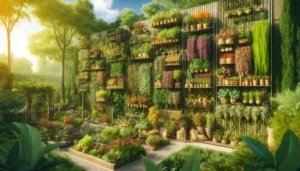
To implement vertical gardening, start by choosing the right support structures that can handle the weight of mature plants. Wooden trellises and metal frames offer durability and can be customized to fit various garden designs. Next, consider the light requirements of plants; vertical structures should be placed so that they do not cast shadows on sun-loving plants. Regular training and tying of plants to the structures will ensure they grow in the desired direction and maintain good air circulation, reducing the risk of pest infestations and diseases.
Additionally, vertical gardening can help protect vegetables from soil-borne diseases and pests by elevating them away from the ground. This method also improves the visibility of the plants, making it easier to monitor their health and spot any issues early on. Overall, vertical gardening is a practical, space-saving, and visually appealing option that can transform a dull garden into a vibrant and beautiful vertical display.
Incorporating Perennials for Year-Round Production
Perennials are plants that live for more than two years, offering a long-term investment for any garden. Unlike annuals, which need to be replanted each season, perennials return year after year, often increasing in size and productivity. This can be particularly advantageous for vegetable gardens, where plants like asparagus, artichokes, and rhubarb provide early spring harvests before annuals are ready to produce. Including herbs like sage, thyme, and mint adds flavor and variety to the garden throughout multiple seasons.

When incorporating perennials into your garden, consider their specific requirements and how they fit into the overall garden design. Perennials often require different care in terms of trimming and feeding, as their roots remain in place year-round. Planning for adequate space is crucial as these plants can spread and may need room to grow without overcrowding other plants.
Furthermore, perennials can contribute to the garden’s ecosystem stability by providing habitats and steady food sources for beneficial insects and wildlife. They also tend to have deeper root systems, which improve soil structure and efficiency in water and nutrient use. To maximize the benefits of perennials, combine them with annuals and biennials to create a diverse, productive garden that thrives year-round.
Smart Watering Practices
Efficient watering practices are critical to the success of any garden, particularly in areas prone to drought or where water conservation is a priority. Smart watering goes beyond just the frequency and amount of watering; it includes understanding the water needs of specific plants and using the best methods to deliver water directly to the roots.
Drip irrigation systems are ideal for delivering water slowly and directly to the soil, reducing evaporation and runoff. Soaker hoses, which allow water to seep out along their length, are another effective option, particularly for large beds. These methods ensure that water is not wasted on leaves, which can reduce disease risk, and that plants receive a deep, consistent moisture level, encouraging stronger root growth.

Timing is also a key factor in smart watering. Watering early in the morning or late in the evening minimizes evaporation and allows water to penetrate deeper into the soil, where it’s needed most. Mulching around plants with organic materials such as straw or wood chips can further conserve moisture and maintain consistent soil temperatures, reducing water stress on plants and empowering their growth and strength.
Summary
Arranging a vegetable garden effectively requires careful consideration of various factors, including plant selection, garden design, and maintenance practices. By utilizing techniques such as vertical gardening and incorporating perennials, gardeners can maximize their use of space and extend the productive season of their garden. Smart watering practices and a deep understanding of plant needs lead to a healthy, sustainable garden environment.
As gardeners become more experienced, they can adapt and refine their garden layout to better meet their needs and the specific conditions of their growing space. The journey of creating and maintaining a vegetable garden is rewarding, providing not only a bounty of fresh produce but also a profound sense of connection to the natural world.
FAQ
Q1: What is the best orientation for vegetable garden rows?
A1: North-south orientation is generally best for rows as it maximizes sun exposure throughout the day.
Q2: How often should I rearrange my garden layout?
A2: It’s wise to consider rotating crops annually, but major redesigns may not be necessary unless you encounter persistent issues or significant changes in gardening goals.
Q3: Can I mix flowers with vegetables in my garden layout?
A3: Yes, flowers can attract pollinators and beneficial insects, and some can deter pests, making them excellent companions for vegetables.
Q4: What are the easiest vegetables to grow for a beginner?
A4: Radishes, lettuce, and tomatoes are generally considered some of the easiest vegetables for beginners due to their quick growth and minimal care requirements.
Q5: How do I handle sloped land in garden planning?
A5: Terracing or using raised beds can help manage sloping lands, improving water retention and reducing erosion.
